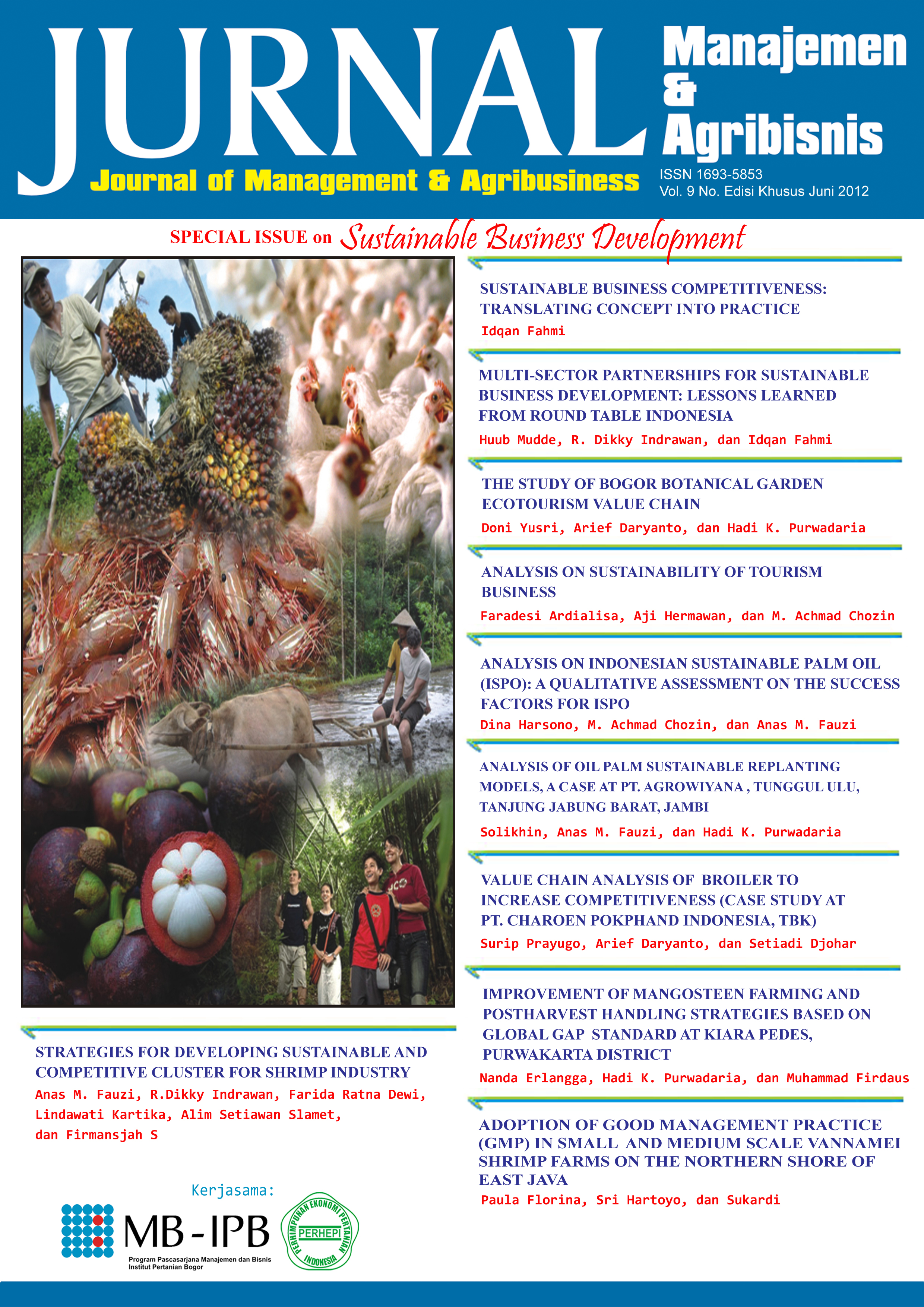STRATEGIES FOR DEVELOPING SUSTAINABLE AND COMPETITIVE CLUSTER FOR SHRIMP INDUSTRY
Abstract
Kampung Vannamei as shrimp cluster is being developed since 2004 by PT CP Prima, tbk Surabaya through Shrimp Culture Health Management transformation technology to several traditional farmers in Gresik, Lamongan, Tuban, and Madura areas. The research objectives aims to identify and mapping of stakeholder, to analyze interaction of stakeholders, to formulate strategy from internal and external environment factors and to set priority on strategy to develop sustainable and competitive shrimp cluster in the Kampung vannamei. Primary data was collected through stakeholders’ discussion forums, questionnaires, and interviews with relevant actors. Observations to the business unit also performed to determine the production and business conditions, particularly in capturing information about the threat and challenges. While the secondary data is used in policy documents national and local area statistics, and relevant literature. Analyses were performed by using the SRI International cluster pyramid, diamond porter’s analysis, SWOT and Matrix TOWS analysis, and analytical hierarchy process. Analyses were performed by the methods discussed in qualitative and descriptive. There are 7 strategies could be implemented to develop sustainable and competitive shrimp cluster. However, it is recommended to implement the strategy base on priority, which the first priority is strategy to improve linkages between businesses in the upstream and downstream industries into multi stakeholders’ platform in shrimp industry.
Keywords: Shrimp, Cluster, Competitiveness, Diamond Porter, SWOT Analysis, AHP
Authors
Authors who publish with this journal agree to the following terms:
- Authors retain copyright and grant the journal right of first publication with the work simultaneously licensed under a Creative Commons Attribution License that allows others to share the work with an acknowledgement of the work's authorship and initial publication in this journal.
- Authors are able to enter into separate, additional contractual arrangements for the non-exclusive distribution of the journal's published version of the work (e.g., post it to an institutional repository or publish it in a book), with an acknowledgement of its initial publication in this journal.
- Authors are permitted and encouraged to post their work online (e.g., in institutional repositories or on their website) prior to and during the submission process, as it can lead to productive exchanges, as well as earlier and greater citation of published work (See The Effect of Open Access).

